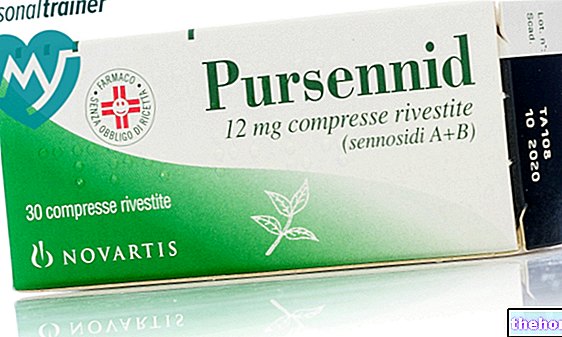Active ingredients: Diclofenac
DICLOFENAC Sandoz gel 1%
Why is Diclofenac Gel - Generic Drug used? What is it for?
PHARMACOTHERAPEUTIC CATEGORY
Non-steroidal anti-inflammatory.
THERAPEUTIC INDICATIONS
Local treatment of painful and inflammatory conditions of a rheumatic or traumatic nature of the joints, muscles, tendons and ligaments.
Contraindications When Diclofenac Gel - Generic Drug should not be used
Hypersensitivity to diclofenac or to any of the excipients
Patients who have experienced asthma attacks, urticaria or acute rhinitis after taking acetylsalicylic acid or other non-steroidal anti-inflammatory drugs (NSAIDs).
Third trimester of pregnancy.
It is advisable to consult the doctor even in cases where these disorders have occurred in the past.
Children and adolescents:
Use in children and adolescents under the age of 14 is contraindicated.
Precautions for use What you need to know before taking Diclofenac Gel - Generic Drug
The possibility of systemic adverse events with the application of topical diclofenac cannot be excluded if the preparation is used on large skin areas and for a prolonged period.
Topical diclofenac should only be applied to intact, non-diseased skin, and not to skin wounds or open lesions. It should not be allowed to come into contact with the eyes or mucous membranes and should not be ingested.
Discontinue treatment if skin rash develops after application of the product.
Topical diclofenac can be used with non-occlusive dressings, but should not be used with an occlusive dressing that does not allow air to pass.
Information relating to excipients
Topical diclofenac gel contains propylene glycol which may cause mild localized skin irritation in some people.
Interactions Which drugs or foods can modify the effect of Diclofenac Gel - Generic Drug
Tell your doctor or pharmacist if you have recently taken any other medicines, even those without a prescription.
Since the systemic absorption of diclofenac following topical application is very low, such interactions are very unlikely.
Warnings It is important to know that:
Pregnancy The systemic concentration of diclofenac, compared with oral formulations, is lower after topical administration. Referring to experience with NSAID treatment for systemic administration, the following is recommended:
Inhibition of prostaglandin synthesis can adversely affect pregnancy and / or embryo / fetal development.
Results from epidemiological studies suggest an increased risk of abortion and cardiac malformation and gastroschisis after use of a prostaglandin synthesis inhibitor in early pregnancy. The absolute risk of cardiac malformations increased from less than 1% to approximately 1.5%. The risk has been believed to increase with dose and duration of therapy. In animals, administration of prostaglandin synthesis inhibitors has been shown to cause increased pre- and post-implantation loss and embryo-fetal mortality.
In addition, an increased incidence of various malformations, including cardiovascular, has been reported in animals administered prostaglandin synthesis inhibitors during the organogenetic period. During the first and second trimester of pregnancy, diclofenac should not be administered except in strictly necessary cases. If diclofenac is used by a woman attempting to conceive, or during the first and second trimester of pregnancy, the dose should be kept as low as possible and the duration of treatment as short as possible.
During the third trimester of pregnancy, all prostaglandin synthesis inhibitors can expose the fetus to:
- cardiopulmonary toxicity (with premature closure of the arterial duct and pulmonary hypertension);
- renal dysfunction, which can progress to renal failure with oligo-hydroamnios;
the mother and the newborn, at the end of pregnancy, to:
- possible prolongation of bleeding time, and antiplatelet effect which may occur even at very low doses;
- inhibition of uterine contractions resulting in delayed or prolonged labor. Consequently, diclofenac is contraindicated during the third trimester of pregnancy.
Feeding time
Like other NSAIDs, diclofenac passes into breast milk in small amounts. However, no effects on the suckling child are anticipated at therapeutic doses of Diclofenac Sandoz Gel. Due to the lack of controlled studies in breastfeeding women, the product should only be used during lactation under the advice of a healthcare professional. In this circumstance, Diclofenac Sandoz Gel should not be applied to the breasts of nursing mothers, nor elsewhere on large areas of skin or for a prolonged period of time (see section "Precautions for use").
Ask your doctor or pharmacist for advice before taking any medicine.
Effects on ability to drive and use machines
The cutaneous application of topical diclofenac does not affect the ability to drive or use machines.
Dosage and method of use How to use Diclofenac Gel - Generic Drug: Posology
Adults over 18 years:
Apply Diclofenac Sandoz Gel 3 or 4 times a day on the area to be treated, rubbing lightly. The amount to be applied depends on the size of the affected part. For example, 2 - 4 g of Diclofenac Sandoz Gel, (quantity varying in size between a cherry and a walnut) are sufficient to treat an area of 400-800 cm2. After application, wash your hands, otherwise they will also be treated. with gel.
Warning: use only for short periods of treatment.
Teenagers aged 14 to 18:
Apply Diclofenac Sandoz Gel 3 or 4 times a day on the area to be treated, rubbing lightly. The amount to be applied depends on the size of the affected part.
For example, 2 - 4 g of Diclofenac Sandoz Gel, (quantity varying in size between a cherry and a walnut) are sufficient to treat an area of 400-800 cm2. After application, wash your hands, otherwise they will also be treated. with gel.
If this product is needed for more than 7 days to relieve pain or if symptoms worsen, consult a doctor.
Children under 14:
Insufficient data are available on efficacy and safety in children and adolescents below 14 years (see also section Contraindications).
Therefore, the use of Diclofenac Sandoz Gel is contraindicated in children under 14 years of age.
Senior citizens
The usual adult dosage can be used.
Overdose What to do if you have taken an overdose of Diclofenac Gel - Generic Drug
The low systemic absorption of topical diclofenac makes an overdose very unlikely.
However, undesirable effects similar to those seen after an overdose of diclofenac tablets may be expected if topical diclofenac is inadvertently ingested (1 tube of 100 g contains the equivalent of 1000 mg diclofenac sodium). In case of accidental ingestion, resulting in significant systemic side effects, general therapeutic measures normally taken to treat poisoning with non-steroidal anti-inflammatory drugs should be undertaken. Gastric decontamination and the use of activated charcoal must be considered, especially within a short time of ingestion.
In case of accidental ingestion / intake of Diclofenac Sandoz gel, notify your doctor immediately or go to the nearest hospital.
Side Effects What are the side effects of Diclofenac Gel - Generic Drug
Like all medicines, Diclofenac Sandoz gel can cause side effects, although not everybody gets them.
Adverse reactions are listed by frequency first most frequent, using the following convention: common (≥ 1/100 to <1/10); uncommon (≥ 1 / 1,000 to <1/100); rare (≥ 1 / 10,000; <1 / 1,000); very rare (<1 / 10,000), not known: frequency cannot be estimated from the available data.
Compliance with the instructions contained in the package leaflet reduces the risk of undesirable effects. If any of the side effects gets serious, or if you notice any side effects not listed in this leaflet, please tell your doctor or pharmacist.
Expiry and Retention
See the expiration date printed on the package.
The expiry date indicated refers to the product in intact packaging, correctly stored.
Protect from heat.
Warning: do not use the medicine after the expiry date indicated on the package.
Medicines should not be disposed of via wastewater or household waste. Ask your pharmacist how to throw away medicines you no longer use. This will help protect the environment.
Keep this medicine out of the reach and sight of children.
COMPOSITION
100 g of gel contain: sodium diclofenac 1.00 g.
Excipients: purified water, isopropyl alcohol; hydroxypropylmethylcellulose, propylene glycol; polyethylene glycol-7-glyceryl cocoate.
PHARMACEUTICAL FORM
Gel for skin use.
Source Package Leaflet: AIFA (Italian Medicines Agency). Content published in January 2016. The information present may not be up-to-date.
To have access to the most up-to-date version, it is advisable to access the AIFA (Italian Medicines Agency) website. Disclaimer and useful information.
01.0 NAME OF THE MEDICINAL PRODUCT
DICLOFENAC SANDOZ
02.0 QUALITATIVE AND QUANTITATIVE COMPOSITION
100 g of gel contain:
Diclofenac sodium 1.00 g
03.0 PHARMACEUTICAL FORM
Topical gel.
04.0 CLINICAL INFORMATION
04.1 Therapeutic indications
Local treatment of painful and inflammatory conditions of a rheumatic or traumatic nature of the joints, muscles, tendons and ligaments.
04.2 Posology and method of administration
Adults
Diclofenac Sandoz Gel should be slowly spread on the skin.
Depending on the surface of the area to be treated, apply from 2 to 4 g, 2 to 4 times a day (form a circular area with a diameter of approximately 2 to 2.5 cm).
After application, wash your hands thoroughly unless they are a place of treatment.
Senior citizens
Non-steroidal anti-inflammatory drugs (NSAIDs) should be used with caution in elderly patients who are generally more prone to secondary reactions. Therefore, although the standard dose of Diclofenac Sandoz Gel can also be used in the elderly, the dosage should in principle be kept as low as possible.
04.3 Contraindications
Hypersensitivity to diclofenac, acetylsalicylic acid or other non-steroidal anti-inflammatory drugs or to any of the excipients of the drug. Pregnancy and lactation.
04.4 Special warnings and appropriate precautions for use
The use, especially if prolonged, of products for topical application can give rise to sensitization phenomena (see 4.8); in such cases it is necessary to interrupt the treatment and adopt suitable therapeutic measures.
Diclofenac Sandoz Gel should not be used on skin sores, open wounds, not even over occlusive dressing.
Avoid contact with eyes or mucous membranes.
Keep out of reach of children.
04.5 Interactions with other medicinal products and other forms of interaction
Although bioavailability studies show interactions with other drugs unlikely, the possibility of competition between absorbed diclofenac and other drugs with high plasma protein binding should be taken into account in high-dose and prolonged treatments.
04.6 Pregnancy and lactation
Like all non-steroidal anti-inflammatory drugs (NSAIDs), Diclofenac Sandoz Gel should not be used during pregnancy and / or breastfeeding. Its use should also be avoided if you suspect a pregnancy or wish to plan a maternity leave.
04.7 Effects on ability to drive and use machines
Nobody.
04.8 Undesirable effects
Occasionally there may be itching, redness and burning of the skin, rashes such as bullous or papular rash; skin blisters, peeling, tingling, involuntary muscle contractions. Local allergic reactions (exanthema, erosion, erythema, eczema and ulcerations) may also occasionally be observed.
Photosensitizing reactions have been observed in isolated cases with other topical preparations containing diclofenac.
However, although the systemic absorption of Diclofenac Sandoz Gel is lower than the oral forms of diclofenac, systemic side effects cannot be excluded.
04.9 Overdose
Since the systemic absorption of Diclofenac Sandoz Gel for topical use is very low cases of overdose are extremely unlikely.
In case of ingestion overdose, use general therapeutic measures normally taken in case of poisoning with non-steroidal anti-inflammatory drugs.
Treatment of acute non-steroidal anti-inflammatory poisoning consists of supportive and symptomatic measures. There is no typical clinical picture of diclofenac sodium overdose.
The therapeutic measures to be adopted are: avoid absorption by gastric lavage and treatment with activated charcoal as soon as possible; supportive and symptomatic treatment for complications from hypotension, kidney damage, convulsions, gastrointestinal irritation and respiratory depression; specific therapies such as for example forced diuresis, dialysis or haemoperfusion are likely not to aid in the elimination of non-steroidal anti-inflammatory drugs due to their high protein binding and long metabolism.
05.0 PHARMACOLOGICAL PROPERTIES
05.1 Pharmacodynamic properties
Diclofenac sodium is a non-steroidal active ingredient with anti-inflammatory, analgesic and antipyretic properties; is an inhibitor of prostaglandin synthesis.
The topical administration of diclofenac sodium allows for the cutaneous absorption of therapeutic concentrations at the site of action. The dose of drug released in the 1% gel concentration is comparable to that of the normal daily dose of oral administration.
05.2 "Pharmacokinetic properties
As with other non-steroidal anti-inflammatory drugs applied through the skin it is important to reach the maximum concentration in the area for therapeutic action rather than plasma concentration. Thus the systemic load produced by oral or parenteral administration can be avoided by local administration.
Comparison of the excretion of diclofenac and its metabolites after oral and cutaneous administration shows almost the same metabolite pattern.
05.3 Preclinical safety data
Acute toxicity: Studies conducted on various animal species have revealed no signs of toxicity.
Chronic toxicity: Studies in rats, dogs and monkeys have shown ulcerations in the gastrointestinal tract with consequent complications (peritonitis, anemia and leukocytosis).
Mutagenicity and Carcinogenesis: No mutagenic effect was demonstrated in various in vitro and in vivo experiments, nor any carcinogenic potential in treated rats.
06.0 PHARMACEUTICAL INFORMATION
06.1 Excipients
Purified water; isopripyl alcohol; hydroxypropylmethylcellulose; propylene glycol; PEG-7-glyceryl-cocoate.
06.2 Incompatibility
None.
06.3 Period of validity
3 years.
06.4 Special precautions for storage
Protect from heat.
06.5 Nature of the immediate packaging and contents of the package
Box containing 50 g tube of gel.
Box containing 100 g tube of gel.
Conical tube, flexible, with membrane, diffuser with internal protection.
06.6 Instructions for use and handling
None.
07.0 MARKETING AUTHORIZATION HOLDER
Sandoz S.p.A. - Largo U. Boccioni, 1 - 21040 Origgio (VA)
08.0 MARKETING AUTHORIZATION NUMBER
Diclofenac Sandoz Gel tube of 50 g AIC n. 034040016
Diclofenac Sandoz Gel tube of 100 g AIC n. 034040028
09.0 DATE OF FIRST AUTHORIZATION OR RENEWAL OF THE AUTHORIZATION
04/08/1999
10.0 DATE OF REVISION OF THE TEXT
March 2004




























